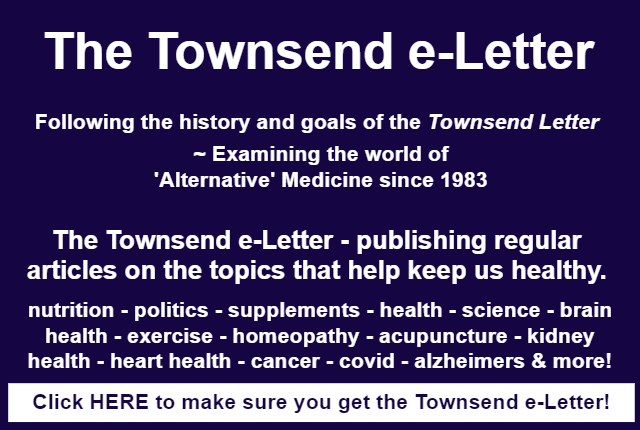Jacob Schor, ND, FABNO
Back in the 1980s, when it came to healthy eating, the bottom line in nutrition was always that people should “eat a wide variety of foods.” This idea came to mind while reading the recent study by Bahrami et al that looked for correlation between dietary diversity scores and risk of colorectal cancer.1
Bahrami recruited patients newly diagnosed with colorectal cancer (n=129), or colorectal adenoma (n=130) along with 240 controls. Food frequency questionnaires were used to gather information about usual diet prior to diagnosis and from that information Dietary Diversity Score (DDS) was calculated for each participant.
Dietary Diversity Scores were used to gauge the variety in the diet. This is not the original use these scores were designed for. These scoring calculations were developed to assess dietary quality in nutritionally challenged demographic groups, a euphemism for figuring out who is on the verge of starvation. DDS turned out to be an accurate, fast, and economical method to quickly predict the micronutrient status of individuals.2 The score is meant to spot malnourishment rather than ideal status. Poor scores on a DDS evaluation strongly suggests a significant level of malnourishment. While there is no rule that says an analytic tool cannot be repurposed, we should keep in mind that DDS scores were not designed to be used to gauge how close to ideal a diet is but rather the opposite, how poor a diet is.
Bahrami and colleagues describe in detail how they calculated dietary diversity scores (DDS) altering the standard food lists to create food groups more suited to an Iranian diet.3,4 Multivariate logistic regression was used to establish a relationship between DDS and odds of colorectal cancer and adenoma.
Consumed food items were categorized into five separate groups, which were vegetables, fruits, bread and grains, meats, and dairy. These groups in turn were divided into subgroups, for example, the vegetable group consisted of seven subgroups: vegetables, potatoes, tomatoes, other starchy vegetables, legumes, yellow vegetables, and other green vegetables. Of note, the grain group was also divided into seven subgroups: white bread, whole grain biscuits, pasta, breads (Sangak, taftoon, barbari), noodle, rice, and barley.
A point was added to a study participant’s DDS for each half serving of a food group eaten per day with a maximum of two points per group. Since there are five groups the highest DDS possible score was ten points and the minimum score zero. The mean score of study participants was 6.
After adjustment for potential confounders, increased diversity of vegetables and fruits was associated with lower risk of colorectal cancer while increased diversity of grains in the diet was associated with higher risk. The grain results were a surprise. In comparing the upper versus lower tertiles, risk for those consuming a greater variety of grain foods for colorectal cancer nearly tripled compared to those in the lower tertile.
Those in the upper tertile of vegetable diversity had nearly a 70% decrease in risk of CRC. Those in the upper tertile of fruit diversity had a 63% decrease. A greater diversity in vegetable and fruit consumption was also inversely associated with risk of colorectal adenoma: those in the upper third of diversity scores for vegetable diversity had a 59% decrease in risk and those among the higher scorers for fruit had a 44% lower risk. These were clinically significant shifts.
Most nutrition studies focus on quantity, weight, or servings of food eaten. These DDS scores give us a fuller glimpse of the diet and give us a measure of the range of different items eaten, whether a person eats a variety of foods or not.
The idea that variety is good has always made intuitive sense even if we had little data to justify it. Variety prevents a person from consuming too much of those bad things that build up in the body and become toxic, and hopefully variety provides adequate amounts of the good things needed to maintain health. A few studies have, in recent years, reported on dietary diversity; and these have been suggestive that greater variety is better, especially in cancer prevention.
Ghadirian’s 2009 paper on breast cancer risk in women with BRCA mutations was the first of what we might call the ‘diversity studies’ that came to my attention. Their small study compared dietary diversity scores among a group of 38 French Canadian BRCA carriers and their eventual risk of being diagnosed with breast cancer. Among those scoring in the top quartile of dietary diversity, risk of breast cancer was 73% lower than women scoring in the lower quartile.5
Given how little information was available on how to lower BRCA risk, this study drew our attention. It justified encouraging patients to eat a wider variety of foods and to eat things they’d never tasted before. My patients were asked to keep diary lists so we might count just how many different foods they ate in any given week. While Ghadirian’s research was on BRCA carriers, that made little difference to me. More variety was the goal, not just for cancer prevention, but for those living with cancer and those hoping to prevent recurrence.
In three separate papers from Werner Garavello in 2008, greater diet diversity was associated with lower risk of pharyngeal, laryngeal, and squamous cell esophageal cancers. Individuals with high diversity scores had a 22% lower risk for pharyngeal cancer6 and nearly 60% lower risk of laryngeal and esophageal cancers.7,8 In 2022, Mirjalili reported that higher dietary diversity scores were associated with a nearly 70% lower risk for prostate cancer.9
Another study of note is Otsuka et al.’s 2020 paper, which examined dietary diversity and all-cause specific mortality in older Japanese adults. This was a relatively large study that followed 386 men and 413 women over a mean of 15.7 years. During that time, 289 subjects died. Compared to subjects in the lowest tertile, HR in subjects in the highest tertile of dietary diversity was 0.69 for all-cause and cancer mortality, a 31% decrease in risk. It is worth noting that there were no significant associations between dietary diversity score and death from cardiovascular or cerebrovascular disease.10
These and other studies taken together certainly suggest that we should encourage cancer patients to eat as diverse a diet, focusing on getting in as wide a variety of fruits and vegetables, as they can.
This might be a good place to end this article if several other aspects didn’t deserve consideration.
Diversity scores may only be a metric for comparing malnourished individuals with slightly better-fed individuals. As a result, we can’t really extrapolate these findings to tell us if there is a benefit when comparing well-nourished to super well-nourished individuals. We can’t use these data to say, for example, whether drinking a vegetable juice smoothie will provide additional benefit over an already decent diet.
Recall that a top score among Bahrami’s study participants was a ten, a ranking that was achieved by eating just half a serving of each food group per day. To earn a maximum score for fruit or vegetable consumption required eating only one total serving of each per day. That’s all. This is far less than the “Five a Day” recommendation that is almost universally accepted today as the goal.
That Five a Day campaign originated in 1988 when the California State Department of Health Services formed a partnership with a coalition of food producers. You might find that self-serving on the part of the food producers; but you know, we would not be the least surprised if a pharmaceutical firm was promoting products like this. Their thinking, at least on the part of the state health people, was that improving the diet might have a greater impact on public health than smoking reduction and might be easier to achieve.
Eating more vegetables and fruit was thought to be the key to improving health. Back then though, this was more theory than established science. The campaign went national in 1991 after being adopted by the National Cancer Institute and an organization called the Produce for Better Health Foundation, which brought funding from over 700 industry groups.11
It wasn’t until 2014 that we saw the publication of solid evidence that this Five a Day strategy was helpful. Wang et al combined data from sixteen prospective cohort studies into a meta-analysis that included more than 800,000 people for periods varying from 4.6 to 26 years. There were nearly 60,000 deaths among participants. Wang reported, “Higher consumption of fruit and vegetables was significantly associated with a lower risk of all-cause mortality.”
The hazard ratios of all-cause mortality dropped approximately 5% for each serving of fruit or vegetables eaten per day. However, there was, “… a threshold [of] around five servings of fruit and vegetables a day, after which the risk of all-cause mortality did not reduce further.” While they reported, “A significant inverse association was observed for cardiovascular mortality …. [but] higher consumption of fruit and vegetables was not appreciably associated with risk of cancer mortality.” 12
The Five a Day thing seemed to help yet leveled out at a 25% reduction in heart disease deaths and no certain benefit in cancer. The diversity studies mentioned previously often seem to have impacts twice that, but on cancer rather than heart disease.
Increasing diversity of fruits and vegetables eaten may have as much or greater impact on health than simply increasing the number of servings of the same vegetables eaten.
This prompts me to look up Rui Hai Liu’s 2004 paper because it’s been a while since I last read it. Liu pointed out that although we were aware from epidemiological studies that eating fruits and vegetables reduces risk of chronic disease, the action of the antioxidant nutrients did not alone explain the health benefits as studies of those antioxidants in clinical trials had not provided similar benefits as eating the foods themselves.
Liu and colleagues at Cornell University had shown through a series of in vitro studies that phytochemical extracts of plants had strong antiproliferative activity against cancer and that extracts from different plants had synergistic effect. They had developed a protocol to measure and quantify these synergistic antiproliferative effects in vitro. Combining mixtures of different foods would do far more to inhibit cancer than would be predicted by simply adding together their individual ingredients’ inhibitory effect. The words I recall all these years later were that effects were ‘multiplicative rather than additive.’
It is this synergy between different vegetables and fruits that explains why greater dietary diversity has greater than predicted effects calculated by counting food servings. Mixing different foods, or their phytochemicals yields a more potent anticancer effect.13
Consider how effective the rotation diets were that we often have food allergy sufferers follow. After running an allergy test, that we all suspected was far from accurate, the testing lab would send our patient a month-long diet plan that rotated foods so that the mildly reacting foods were not eaten on successive days. Patients pretty much always felt better following these diets. In hindsight, one must wonder whether it was the increased diversity of foods consumed that provided benefit as much or more than the removal of allergen triggers?
- Bahrami A, Shirani P, Sohouli M, et al. Dietary diversity score (DDS) and odds of colorectal cancer and adenoma: a case-control study. J Nutr Sci. 2022 May 10;11:e34.
- Zhao, W., Yu, K., Tan, S. et al. Dietary diversity scores: an indicator of micronutrient inadequacy instead of obesity for Chinese children. BMC Public Health 17, 440 (2017).
- Kant AK, Schatzkin A, Harris TB, Ziegler RG, Block G. Dietary diversity and subsequent mortality in the First National Health and Nutrition Examination Survey Epidemiologic Follow-up Study. Am J Clin Nutr. 1993 Mar;57(3):434-40.
- Mirmiran P, Azadbakht L, Esmaillzadeh A, Azizi F. Dietary diversity score in adolescents – a good indicator of the nutritional adequacy of diets: Tehran lipid and glucose study. Asia Pac J Clin Nutr. 2004;13(1):56-60.
- Ghadirian P, Narod S, Fafard E, Costa M, Robidoux A, Nkondjock A. Breast cancer risk in relation to the joint effect of BRCA mutations and diet diversity. Breast Cancer Res Treat. 2009 Sep;117(2):417-22.
- Garavello W, Giordano L, Bosetti Cet al. Diet diversity and the risk of oral and pharyngeal cancer. Eur J Nutr. 2008 Aug;47(5):280-4.
- Garavello W, Lucenteforte E, Bosetti C, et al. Diet diversity and the risk of laryngeal cancer: a case-control study from Italy and Switzerland. Oral Oncol. 2009 Jan;45(1):85-9
- Lucenteforte E, Garavello W, Bosetti C, et al. Diet diversity and the risk of squamous cell esophageal cancer. Int J Cancer. 2008 Nov 15;123(10):2397-400.
- Mirjalili F, Rezazadegan M, Jalilpiran Y, et al. The Association between Dietary Diversity Score and Risk of Prostate Cancer: (A Case-Control Study). Nutr Cancer. 2022;74(4):1270-1278.
- Otsuka R, Tange C, Nishita Y, et al. Dietary Diversity and All-Cause and Cause-Specific Mortality in Japanese Community-Dwelling Older Adults. Nutrients. 2020 Apr 10;12(4):1052.
- Foerster SB, Kizer KW, Disogra LK, et al. California’s “5 a day–for better health!” campaign: an innovative population-based effort to effect large-scale dietary change. Am J Prev Med. 1995 Mar-Apr;11(2):124-31. PMID: 7632448. https://www.ajpmonline.org/article/S0749-3797(18)30488-4/fulltext
- Wang X, Ouyang Y, Liu J, et al. Fruit and vegetable consumption and mortality from all causes, cardiovascular disease, and cancer: systematic review and dose-response meta-analysis of prospective cohort studies. BMJ. 2014 Jul 29;349:g4490.
- Liu RH. Potential synergy of phytochemicals in cancer prevention: mechanism of action. J Nutr. 2004 Dec;134(12 Suppl):3479S-3485S. doi: 10.1093/jn/134.12.3479S. PMID: 15570057.
About the Author
Jacob Schor, ND, now retired, had a general practice with a focus on naturopathic oncology in Denver, Colorado. He served as Abstract & Commentary Editor for the Natural Medicine Journal for several years (https://www.naturalmedicinejournal.com/) and posts blog articles on natural therapies, nutrition, and cancer (https://drjacobschor.wordpress.com/). He is a board member of CoAND and past president of OncANP, and someone who is happier outdoors than inside.



